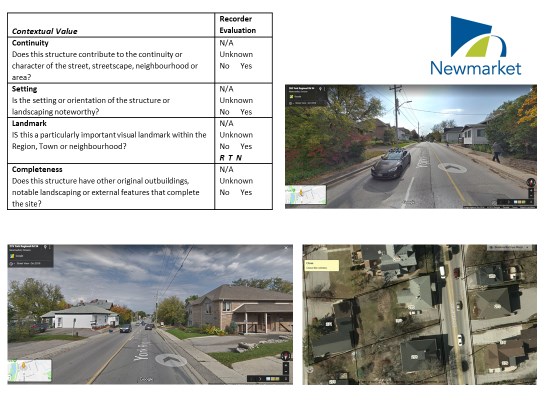This week, I thought I would tackle a topic that seems to be misunderstood by many of the people I meet on my heritage walks or during my heritage talks: the Ontario Heritage Act and how it shapes Newmarket’s heritage preservation strategy. All municipalities in Ontario fall under this act.
My thanks to Dave Ruggle at Newmarket’s planning department and the people at the Ontario Heritage and Culture department who were of such great help with this article.
In Ontario, the conservation of our cultural and heritage conservation resources falls under the mandate of the Ontario government, acting in the interest of the public. The Ontario heritage act gives municipalities the power to preserve our heritage, usually through the preservation of historic buildings, although it is not limited to that alone. Any property of ‘cultural heritage value’ can be designated, including houses, barns, factories, cemeteries, parks, bridges, trees, monuments and much more.
There are more than 7,000 properties designated provincewide. In Newmarket, 45 properties are currently designated under the act and about 100 properties within the Main Street heritage conservation district.
This bylaw describes the specific heritage attributes that give the property its heritage value (design/physical, contextual/natural, historical/associative). It is designed to protect those identified heritage attributes through the requirement for permits before any work can begin. It allows council to prevent demolition of a building on a designated property. A property owner can always appeal council’s decision to the LPAT. It is also intended to ensure that designated properties are being maintained (property standards bylaw).
It is equally important to understand what the Heritage Act is not intended to do. The act does not generally impact any interior spaces unless they are of unusual significance or are rare. It does not restrict the choice of paint colours. Designation of a property does not result in higher insurance premiums (this is mentioned within the act).
Designation does not prevent the introduction of modern conveniences such as pools, central air and garages, as long as the distinguishing elements would not be impacted. Designation does not require that an owner “sign off’ for regular maintenance.
Designation does not affect property values, but it may affect the retail value of the property to the benefit of the owner. Importantly, designation does not obligate owners to restore any lost features before their purchase of the property, although it would be suggested, and they would receive guidance should they choose to do so.
Designation does not prevent the redevelopment of a property if it is done within the designation criteria as documented.
The Town of Newmarket maintains two lists, one containing properties that have been designated and a second one for properties of interest, with the intent of further examination to deem their suitability for designation.
Any individual can seek to place a property on the second list and the Town encourages the public’s input. Once a property is identified for designation, an in-depth review is required to specifically determine the property’s heritage attributes.
This process has changed over the years. When we had more independent body called LACAC, which was the precursor to the Newmarket Heritage Committee, they would determine the properties recommended for designation, pursue the necessary investigation and documentation, and then go to the Town for the act of designation.
Today, the Town employs outside agencies, specifically tasked with an independent investigation of each property and the generation of an ‘independent’ report for council’s use. Currently, the town contracts Archaeological Research Associates Ltd (ARA) to perform property research and analysis within the context of the provincial evaluation guidelines. The report is said to be more effective should the process end up in a tribunal hearing. The heritage committee reviews the report generated by ARA but only as a ‘rubber stamp’ for council.
So how is the designation process administered? The Town serves a notice of intention to designate, notifies property owner notified and the public through advertising. Council will pass and register a designation bylaw. If there are no objections within 30 days, council passes the designation bylaw and notifies the owner of the property, a public notice is placed in the paper and notification is given to the Ontario Heritage Trust. Once that is done, the property is then placed on the municipal register, the official listing of Newmarket Heritage Properties and the property also placed on the provincial register, called the Ontario Heritage Trust.
While properties that are designated are generally plaqued, the existence of a plaque on a property does not mean a property is designated. Confusing? Since any owner can request a plaque for his property, whether or not he intends to actually proceed to having the property designated, the plaques are a nice touch, providing some heritage perspective on your property without designation.
Should you wish to have a plaque for your property or wish to propose a property for designation, one can go to the Town Offices on Mulock to obtain the necessary forms or you can simply visit the Town’s website and download them personally.
If you wish to see a listing of the heritage register, you can visit here and print a handy copy for your very own heritage walks.
Sources: Dave Ruggle, Town of Newmarket Planning Department; Ontario Heritage and Culture Ministry; Heritage Newmarket committee meetings notes
************
NewmarketToday.ca brings you this weekly feature about our town's history in partnership with Richard MacLeod, the History Hound, a local historian for more than 40 years. He conducts heritage lectures and walking tours of local interest, as well as leads local oral history interviews. You can contact the History Hound at [email protected].



